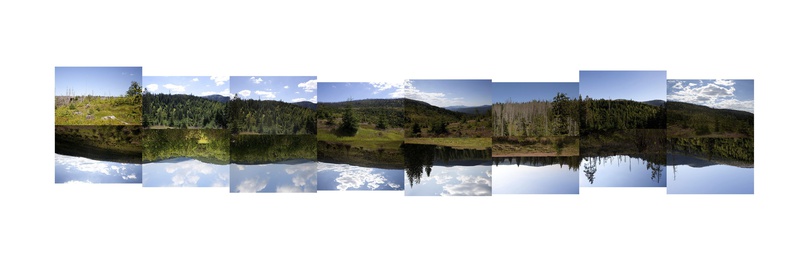Now that the effects of climate change can no longer be denied, the majority of environmental scientists agree that new socio-economic models are needed to design our lives. Reality will probably even force us to accept that progress has its limits, at least if we see progress only as economic growth. “When it comes to a major shift in paradigm like this, academics state that it is not so much about a different direction for organisations and society, but about a fundamentally different way of thinking, about our political and health care systems, labour relations and education, about financial systems, about doing business and living together.”
Even though Milena Bonilla does not actively look for new socio-economic models in her work, many of her works of art do explore this field. Nature, history, science, literature, education, the mass media – these are all topics regularly covered in Bonilla’s videos, installations and drawings. This visual artist strongly emphasizes the power of both language and historical processes in her work. She looks for the real meaning that the documents she studies represent, and after that she investigates how they have influenced our view of reality. Bonilla does not primarily focus on finding the truth. In the first place, her work explores the political complexities between people, language and non-human creatures. The work aims to identify the cracks that these interactions have left behind in silence. Cracks caused by pre-programmed points of view and logic. Cracks that have often resulted in a rather different opinion of the general public compared to the facts of reality.
The video installation An Enchanted Forest (2013-2014), tells us the fascinating story about a group of red reindeer that lived in the Bohemian Forest until the beginning of the Cold War – a forested area stretching from Germany to the Czech Republic. The Iron Curtain divided the forest into two parts, creating two separate herds divided by an area of no man’s land. When the Wall came down in 1989 this did not change. Even though the fence was removed and the animals were able to move freely into each other’s territories, scientists found that the female red reindeer did not cross the border. Even after a few years this still had not changed.
The photographs and the sculpture in this installation show both the Bohemian Forest itself and the fixed routes that the reindeer take in the area of no man’s land, revealing the various aspects of this extraordinary natural area to the visitor. This installation plays with reality and fiction. Two stories, one about a group of anarchists moving into the forest and the one about the two separate herds of reindeer are used to address the themes of control of territory, bio politics, geopolitics and pacific resistance.
It remains a mystery why the animals do not cross the border. The installation does not attempt to provide an answer. The video is more about revealing the unintended and, in this case, positive effect of the Cold War. The fact that there were no people living in this area, allowed animals and plants to live and develop without being disturbed, resulting in a unique natural habitat. However, do these two herds of red reindeer really exist? Or are they a myth created by Bonilla after all?

